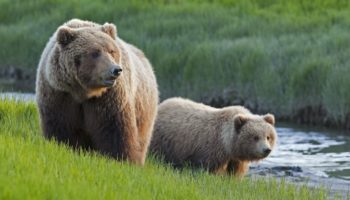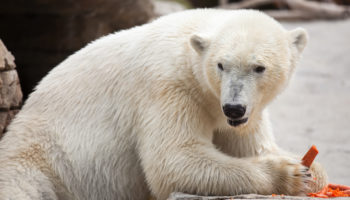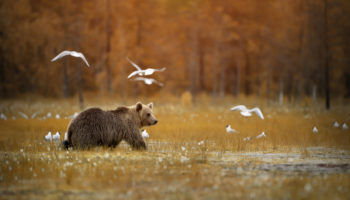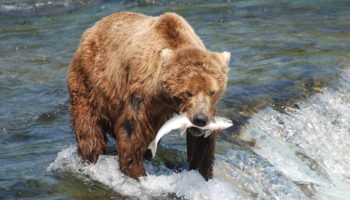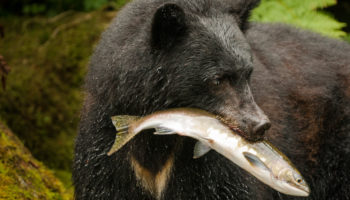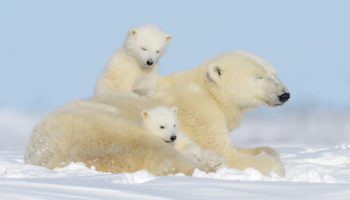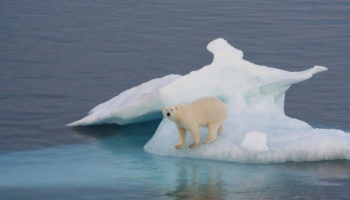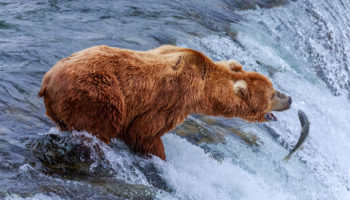Grizzly bears are a subspecies of the brown bear. They live in North America and inhabit the most diverse set of habitats of any bear species. They are found in forests, alpine meadows, prairies, and even the coastal regions of North America.
A standing adult grizzly bear measures an average of 2.5m, although on all fours, they stand at around one meter in height. Their white-tipped fur distinguishes them from other large North American brown bears.
They have long rounded claws the length of human fingers that they use to dig for food and excavate dens to hibernate in.
Exploring the diet of a grizzly bear
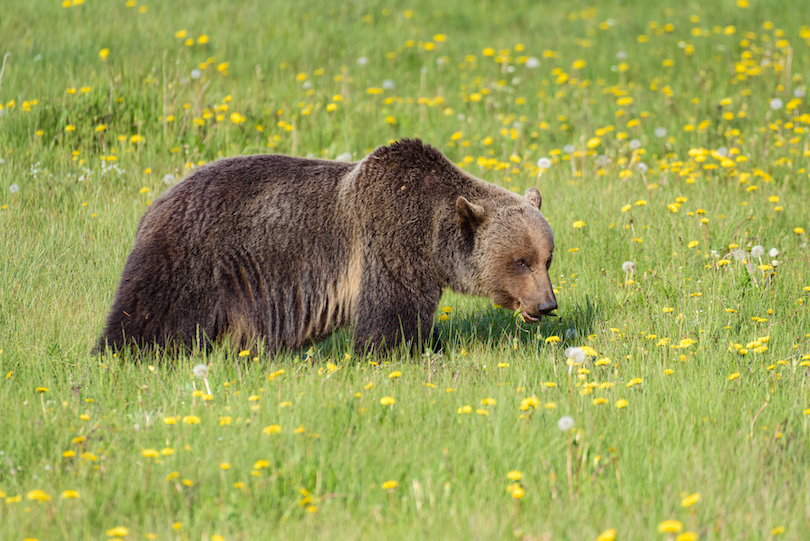 © Dreamstime
© DreamstimeGrizzly bears are classified as carnivores and have a digestive system that is characteristic of a carnivore. However, they have an omnivorous diet. They also have teeth that are adapted to break down and chew both meat and plant matter.
They have a very varied diet, made up of fruits, nuts, roots, grasses, herbs, berries, and animal protein. Grizzly bears eat all creatures, big and small, from an elk to a moth. They feed on mammals, insects, and fish to get all the nutrients they need in order to sustain themselves.
These animals are mostly solitary, individually hunting and feeding. However, they will sometimes come together to feed if a particular food is abundant in one area. Groups of grizzly bears are observed clustered together around rivers during salmon spawning.
Grizzly bears are opportunistic feeders and will eat and graze on whatever is available. They are also scavengers and will happily eat carrion left over by other animals.
How much do grizzly bears eat?
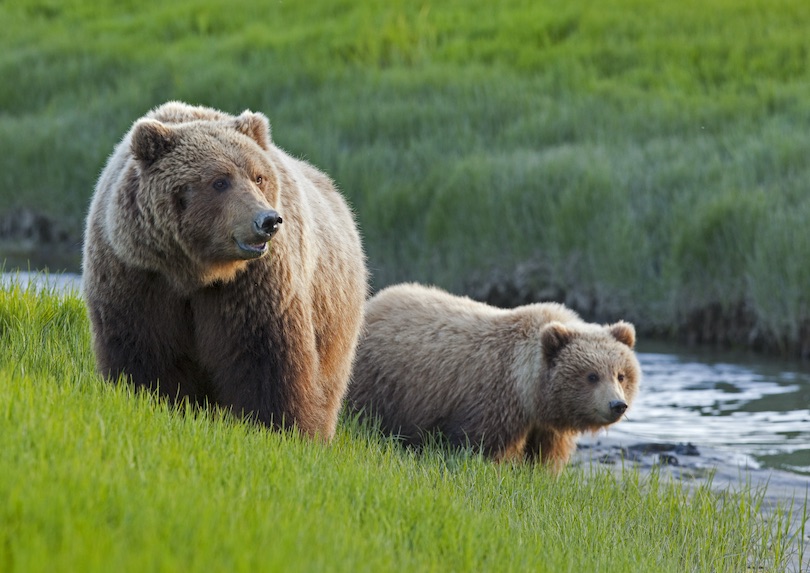 © Dreamstime
© DreamstimeGrizzly bears spend most of their time foraging, hunting, and fishing. Their life largely revolves around eating and building up a high fat reserve for their winter hibernation.
They are large mammals – their exact size and weight varies based on their geographical location. The average North American grizzly bear female weighs some 360kg whilst males weigh around 320kg. Alaskan and Canadian grizzlies weigh even more, up to 545kg, as they have a higher fat content in their diets.
On average, grizzly bears will eat some 14kg of food per day. This will vary dependent on the season, with an increased daily intake during the fall season as winter approaches and the bears prepare their winter dens.
How do grizzly bears get their food?
Grizzly bears are highly adaptable feeders and can use a range of methods for finding food. They fish, hunt, scavenge, dig, and forage. Each season offers an abundance of different food sources, and grizzly bears will adapt their methods accordingly.
They have large snouts and noses with a keen sense of smell that help them to locate food. It is estimated that bears can smell carrion from as far as 28km away! They are also fast mammals that can run up to 40 miles per hour for a short distance.
Grizzly bears have large canines and small incisors, perfect for hunting and killing their prey. They have long claws that they use to dig up the dens of small rodents and insects, a high protein snack for a bear.
As they eat a variety of plants, grasses, and seeds, they have also developed large molars characteristic of herbivores to grind and crush plant-based foods.
How do grizzly bears fish and hunt?
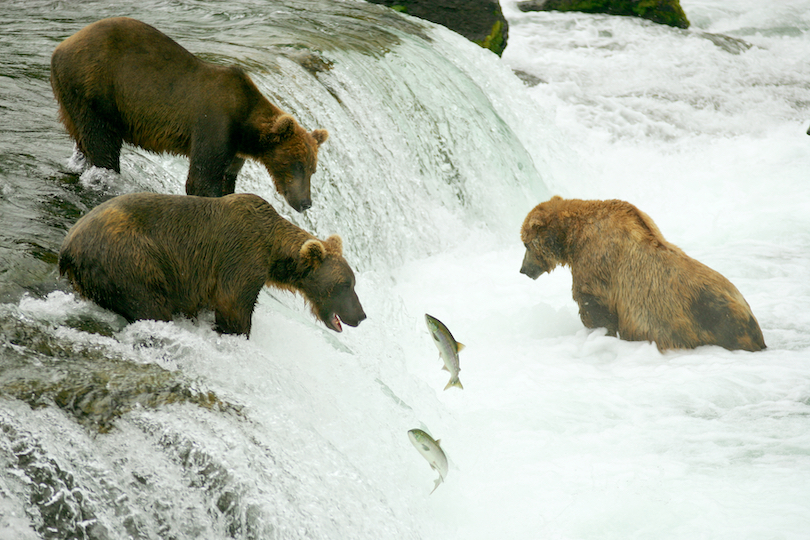 © Dreamstime
© DreamstimeGrizzly bears are among the best swimmers in the bear kingdom. They are no match for a polar bear, but they can confidently tackle the water. This is essential as they rely on fish as a source of protein.
They have different fishing methods, the most observed are diving and flipping. Grizzly bears will often perch on a rock in the river or on the riverbed and flip fish out of the water and onto land, killing them with their sharp teeth.
Alternatively, they will dive into the water as a fish passes by, pinning the fish to the riverbed floor and breaking its back by force in the process.
These animals rely on their sense of smell, sharp teeth, speed, and strength when they hunt. They can hunt mammals as large as adult elks and caribou, but tend to predate on young, wounded, or weakened prey.
What eats a grizzly bear?
There are few carnivorous species in the North American continent that are large enough to match a grizzly bear in a fight. This bear species is large and heavy. They are also known to become aggressive if they feel under threat. Once fully grown, they are seldom predated on.
Grizzly bear cubs are more vulnerable to predation but are fiercely defended by their mothers. They communicate threats to their mothers with warning calls, alerting her to predators and danger. Mother bears are more aggressive than normal adult bears – only a brave predator would risk the attack.
The only known predators of the grizzly bear are mountain lions and wolves. Bear cubs are sometimes attacked by other bears, like black bears or other brown bear species.
What do grizzly bears eat in captivity?
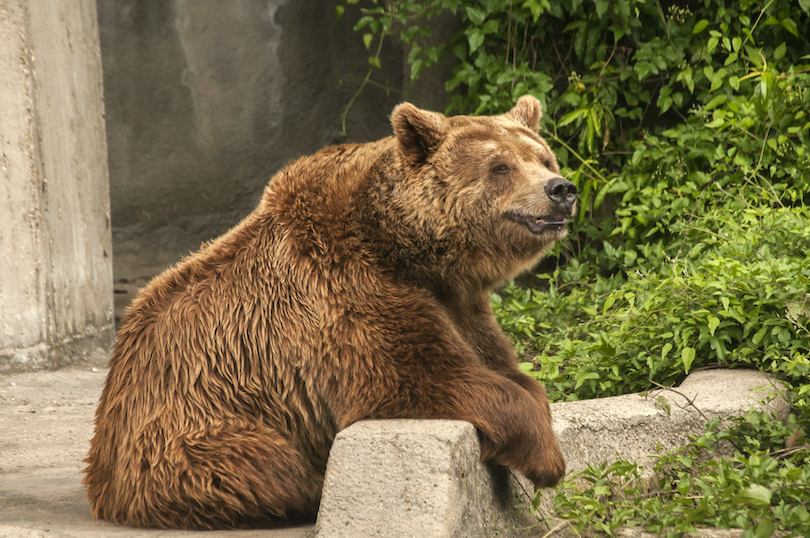 © Dreamstime
© DreamstimeZookeepers should keep a captive animal’s diet as similar as possible to their diet in the wild. Bears adapt their metabolic activity and feeding habits seasonally due to hibernation and food source availability, and it is important for captive bears do this too.
Captive bears are fed a varied diet of fruits, vegetables, meat, fish, nuts, lard, grass, bones and browse. Like wild grizzlies, they feed during the day and increase their food intake during the fall.
It isn’t uncommon for captive grizzly bears to forgo hibernation altogether, as they have a continuous supply of food and aren’t exposed to the harsh weather conditions they face in the wild. However, captive bears do feed less in the winter as their metabolism naturally slows down.
Pregnant females in captivity often still hibernate, rearing and nursing their young in makeshift dens. They won’t come out until the springtime when their fat reserves run low.
What do grizzly bear cubs eat?
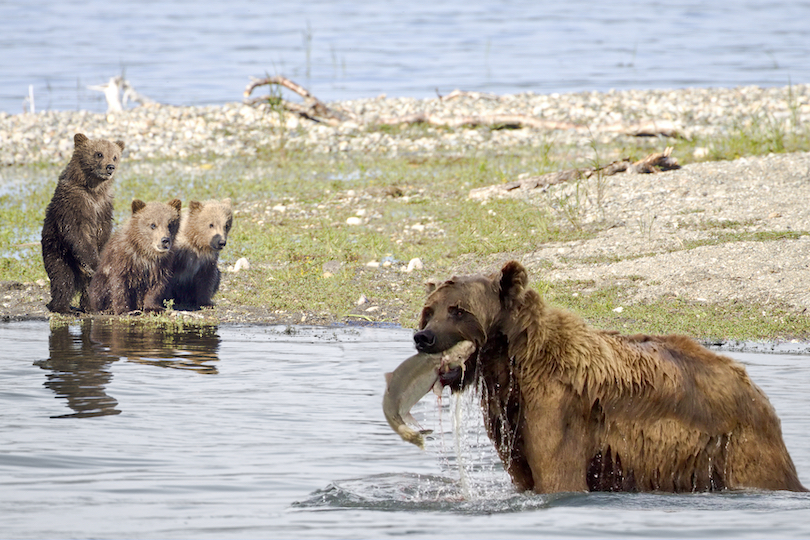 © Dreamstime
© DreamstimeGrizzlies give birth to their cubs in their dens during hibernation. They are born around January and emerge with their mothers in spring. Their mothers nurse them in the den, providing them with a rich, fatty milk.
Whilst Grizzly cubs do start to eat solid foods early on, they nurse for a surprisingly long time. Mothers can stay with their cubs and nurse them for up to three years!
Despite this, cubs quickly grow and learn how to forage, hunt, and fish by watching their mothers and imitating her behavior. When a mother bear decides she is ready to mate again, her cubs will be left to fend for themselves.
Is a grizzly bear’s diet affected by the seasons?
The feeding habits and ways that bears get food are largely affected by the seasons. As they don’t predate on a single animal species or forage for a particular plant, their diet changes in response to the food sources available in each season.
Grizzly bears hibernate for up to six months of the year, remaining in a state of torpor to avoid the food shortages and harsh weather conditions of the winter period. They will feed most during the autumn in preparation for hibernation.
If they Grizzly bears didn’t hibernate during the winter, they would be vulnerable to starvation as few plant species grow from December to February, and animals are hard to hunt as waters freeze over and the winter snow thickens.
What do grizzly bears eat in each season?
In springtime, they eat wild grasses, leaves, and flowers that grow quickly and in abundance as the winter snow melts away. Interestingly, grizzly bears eat twice as much in the months leading up to hibernation as they do in spring.
In the summer months, they hunt and eat seasonal berries like strawberries, blueberries, raspberries, dogwoods, and chokecherries. They also feed on soft fruits.
Whilst berries and fruits are sweeter and tastier, insects are a great source of protein. They dig up insect nest and attack beehives and wasp colonies, eating as many insects as they can catch.
In the fall, grizzly bears change their diet again, relying largely on grasses, roots, wounded animals, and carrion. They also make the most of salmon spawning in November. In autumn, they may choose to forage during the night to put on extra weight for winter.

